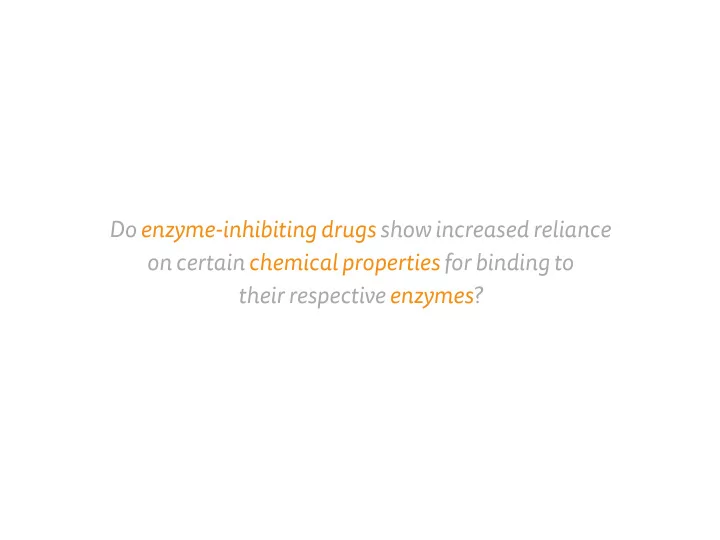

Do enzyme-inhibiting drugs show increased reliance on certain chemical properties for binding to their respective enzymes?
Chemical properties that a fg ect binding of enzyme-inhibiting drugs to enzymes Research proposal by Dan Nacu
Why is this signi fj cant? Drug Development Computers
How can it be done? Simulation Models Shape Complementarity Chemical Properties
How can it be done? Chemical Properties Solvent Accessible Surface Area Hydrophobicity Electrostatics Van Der Waal’s Forces Residue Pair potential Desolvation Energies Atomic Contact Energies Complementary Determining Regions etc… A lot of options…
Its been done before…in a di fg erent way. Li et al, 2007 Their Equation Their Results
How will this be di fg erent? Introducing HINT H ydropathic INT eractions The HINT Equation
What can be done? By weighing each variable in HINT, the most important chemical property for enzyme/ inhibitor complexes can be found. Remember The Question Do enzyme-inhibiting drugs show increased reliance on certain chemical properties for binding to their respective enzymes?
What’s the experiment? Start with 46 enzyme inhibitor complexes from the Benchmark 5.
What’s the experiment? Bound Unbound FTDock Huge list of possible complexes
What’s the experiment? Huge list of possible complexes L_RMSD Testing Ligand_Root-Mean-Square-Deviation Top 20 Structures
What’s the experiment? Top 20 Structures For 46 complexes = 920 simulated structures. For both bound and unbound, 1,840 total Lets look at just one
What’s the experiment?
What’s the experiment? In the end… 23,000 HINT Scores for Bound 23,000 HINT Scores for Unbound 46,000 scores 46•20•5•5 = 23,000
What’s the experiment? Highest 50 HINT Scores for each complex L_RMSD Testing Ligand_Root-Mean-Square-Deviation Find best match for each complex Results!
Possible Results
Possible Results
In the future… Di fg erent models (besides HINT) Di fg erent complexes (besides enzyme/inhibitor)
Questions?
Recommend
More recommend